方案详情
文
压汞法孔隙度测试分析技术是基于在精确控制的压力下将汞压入孔结构中的方法实现的。除高速、精确及分析范围广等优点外,压汞仪还允许用户计算得到众多样品特性,例如:孔径分布、总孔体积、总孔比表面积、中值孔径及样品密度(堆积密度和骨架密度)。
方案详情

Application Note --20 Understanding the Bulk and Skeletal Density Computations for theAutoPore and PoreSizer Instrument Type: AutoPore,PoreSizer Technique:Hg Porosimetry Mercury porosi metry aasper for medd bbyithe Aut oPore aand1PoreSi zeriis pri marilyintended to measurethetotalvolume of pores wi thi niasample bet ween an upper and alowerr limitt(ofpporesizes.Bothaiinstrument s make theseme as ur e ment s of porosity towithin a 1% accuracy level.Inadditiontopor os it y, mercuryporosi metryis oftenused1ttoproduce measurement s ofproperti es calledthebulkdensity and the skeletaldensity Relativteomrcuryporosi metry, bulkdensity isdefined as the unitt weight perunitt volume (usually gr ams percubic centimeter) of amaterial afterthe volume:ofthe largestt(openpores(largerthan aspecific size) havebeen subtracted. Atypi calvalue for the largest poreincluded inthe bulkdensityis 180micrometers. Skeletaldensity isusuallyy computedafterr thee volume off aall poreslargerr thanabout0. 005micrometers havebeenexcludedfrom thevolumepresumedl occupied1by thematerial. It isS cobvious that themercuryporosimeterdoesnott measuredensity directly, but insteadlS pri marilya volumemeasuringg instrument. Theconversion tto densitiesrequiresthat the operatorprovidethe necessary weighttocomplete tthe comput ation.Anunderstanding ooff tthhee bulkdensityand skeletal1densitycomputationswi 11be mucheasier if the concept of themercuryporosi meterraS avolume measuringdevice iskeptfIoremst i mi nd. Co mputations A derivationof the formulasbulkandskeletaldensitiesbeginsby referringto Fi gure 1 whichiiS asi mplified sketchi ofapenetrometer assembly withaporoussampleiinside.Theinternalvolume of thepenetrometer including boththe bulb and capillary,hasbeenprevi ously determi nedbytechnique of mercuryfillingand weighing. As sumethat now thesample hasbbeeninsertedandthemercury ehasfilled alll tthe remainingvolume eexcept: forthatoccupiedbythe sampleand itspores )f less thanappr oxi mately l180) mcrometersinopening di ameter. We cannow write VHg(1) where Vs (B) bulkvolume coff tthesample, Vpen VHg volume of mercury occupyingthe remaini ng space. Fi gure l1. Penetrometer Diagram Theoperating procedures forthe rcury ppoorr( osimetersrequire tthat anumberofwei ghtsbeprovided.. AAmongthese are the: weight oftheempty penet rometerassemblyincludi ngg ttheysealinghardware, the: weight of thesealed penet rometerwith onlythe sample inside,andthewei ght off tthee sealedpenetrometer withthesampleinsi de; and filled1 wi thmercury. Fromthese weight s,itiis possible tto findl thevolume of mer curyy occupyingthe remining space aroundlthesample. It is VHg = WHg /Hg(2)where offthemercuryoccupyi ng theremainings pacearoundt hesample,and Hg t he density ofmercur yyat25F(13.5335g/cc). The merrccuurryy wei ghtis Woen - V(3) where WSHg = the total weight, Wen = the penetr ometer and hardwa r e weight and thesamplee weight. Wen andi Ws have beenprovidedaalreadyaddedt ogetherbyy the operatorandreadyto subtract from t het ot alweight. Substituting (3) int o (2)gi ves VHg =WPSHg - Al so substituting (4))iinto (1)gives Vs(B)=Vpen[WPSHg-- VWen- W/ Hg] From here iit simple stepto dividetthe sample wei gh wby Vs(B)density s(B). s (B)=W/Vs(B)(6) The:skeletal Vs(S)_isfound by subtracting the tot alvolume of pores filled bymercury Vp, fromthe bulkvolume. Vs (S) = Vs(B) Vp(7) Specific porveolume. Ps, thepore vol ume per gram ofmateriali s most commonlyreported.Iti then necessaryto multiply the sspecific porevol umeby the totall weight ofthesampleettoobtain the totalporeevvolume. Vs(S))=Vs(B) -WPs (8) Again,itiss only necessary todivide the sample wei ghtbyy Vs(S) to obtain the; skelet aldensity. s(s)=W/Vs(S)(9) Troubl es hoot i ng Errors anddmpoorresultssomet i mes occurrinthesedensity determinati ons bymer curypor osi metry. Theculpritof poorr Iresultss isrevealedin Equation(5).Notice that Vs(B)ismostcommonly a small numberderived byysubtracting t wolargernumbers which arenearly equal. It is notuncommoniforthese numbers tobe10 times greater thanVs(B). Onepercent error S inthe numbers becometen percenterrorSinVs(B). Al1 thenumbers Should thee ppeenneetrometernotbee completelyfilled, the eexces Svolumee lisassignedtothesample forVs(B)are; Sslupplied by theCerator andare derivedprimrily by wei ghingprocedures..((Vpen isusuallyobt ai ned by weighing thepenetrometer after fillingitwithl mercury,i and dividingthewei ght bythe density ofmercuryat ambienttemperature.) The major opportunity forinstrument error 1to affectVs(B)iiis; innthhee fillingprocess.Should thepenetrometer not be completelyfilled. theexcess volume iisiassignedto tthe sample. Someslightt eerror could also occuridueto ttemperature differencesaS the(density of mercuryisassumedby some instrument s tobeconstant at 13.5335. the25C value. Theeexact pressureappliedto ttheermercury at thestarting point forrtthe porevol ume imeasurementwi11 alsoaffect the bulk vol ume ashigher pressur e S fillprogressively smallerpores.Ifthe material hassigni fi cant porevol umedistributioninn the 100mi crometer range,,it will bedifficultt to obtainreproduci ble bulkvolumemeasurements ue to therequi rement forr2ai hi ghlyprecise and. 1reproduciblestarting pressure. Skeleta1volume.Vs(S),me asurement accuracyisdependent upon, first, theaccuracy off Vs(B)aanddtthenupontt he accuracy of the porevolume imeasurement. It is not.however. aS dependent upont hestarting pressuresinceanypore volume rnott 1intrudedat the low filling ppressure(and thereby increasing Vs (B)wi1lbbeintruded by mercury,me asur ed, and subtracted ffromVs(B)asthe pressureincreases. TheeerrortherebylS self-cancelling. Msmatchescof measuredskeletal densitiesto handbookvalues ffor tthe materiall rmayalso betduetoO Cclosed pores towhichh rmercury has no iaccess.pores that are too small to beintruded bymercuryat thehi ghestpressureused.andcompressionoff tthesample.Compressi oncan beparticularly si gni ficant inthee case of organic materials.Up to l10% volume reductioncanoccurr in plastic materialsat 60, 000psia.. tAnpanying change of densityOccurs andisduly reported bytheinstrument. Re co mme nde dProcedures The following prprococedures willhelp mi ni mi zeDeerrors: i)):= Ensureaccuratee ywei ghi ngtoatleast 5si gni fi cantdigits where possible. 2):= Accurately determi ne thei nt ernal volume (bulbandcapillary) thepenetrometers to fivesigni ficantdi gits ifpossible. Besure to iusethesamesealing ccap withthepenetrometer at altimes sinceslightrregularitiesBfrom capto cap can ccaus emeasurable eerrorS in theinternal volume. 3)=Mkee occasionalinspections to be surethatthe penetromet ersarefilling properly. 4):=Avoid trying to doprecise density measure me nt swhenthetemperature cof thepenetrometerrwill varysigni ficantly. 5)= Use the: maxi mum practicalsample volumein tthepenetrometer bulbconsistentwith capillarycaipiacity. This willi ve the mathematical“leverage.” 6):=Carefully review theweight infor mationentered to guard againsterrors pri orr lto eachh rrun. 7)=Exami ne theporevolumedistribution((curve forhigh slopeaat thebeginning andend.Reproducible results willbe more difficulttoobtainninsuch cases.sl opeeat the highpressuretend my raallso bedueto crushing of closedpore s or compression cofthe material. 压汞法孔隙度测试分析技术是基于在精确控制的压力下将汞压入孔结构中的方法实现的。除高速、精确及分析范围广等优点外,压汞仪还允许用户计算得到众多样品特性,例如:孔径分布、总孔体积、总孔比表面积、中值孔径及样品密度(堆积密度和骨架密度)。
确定
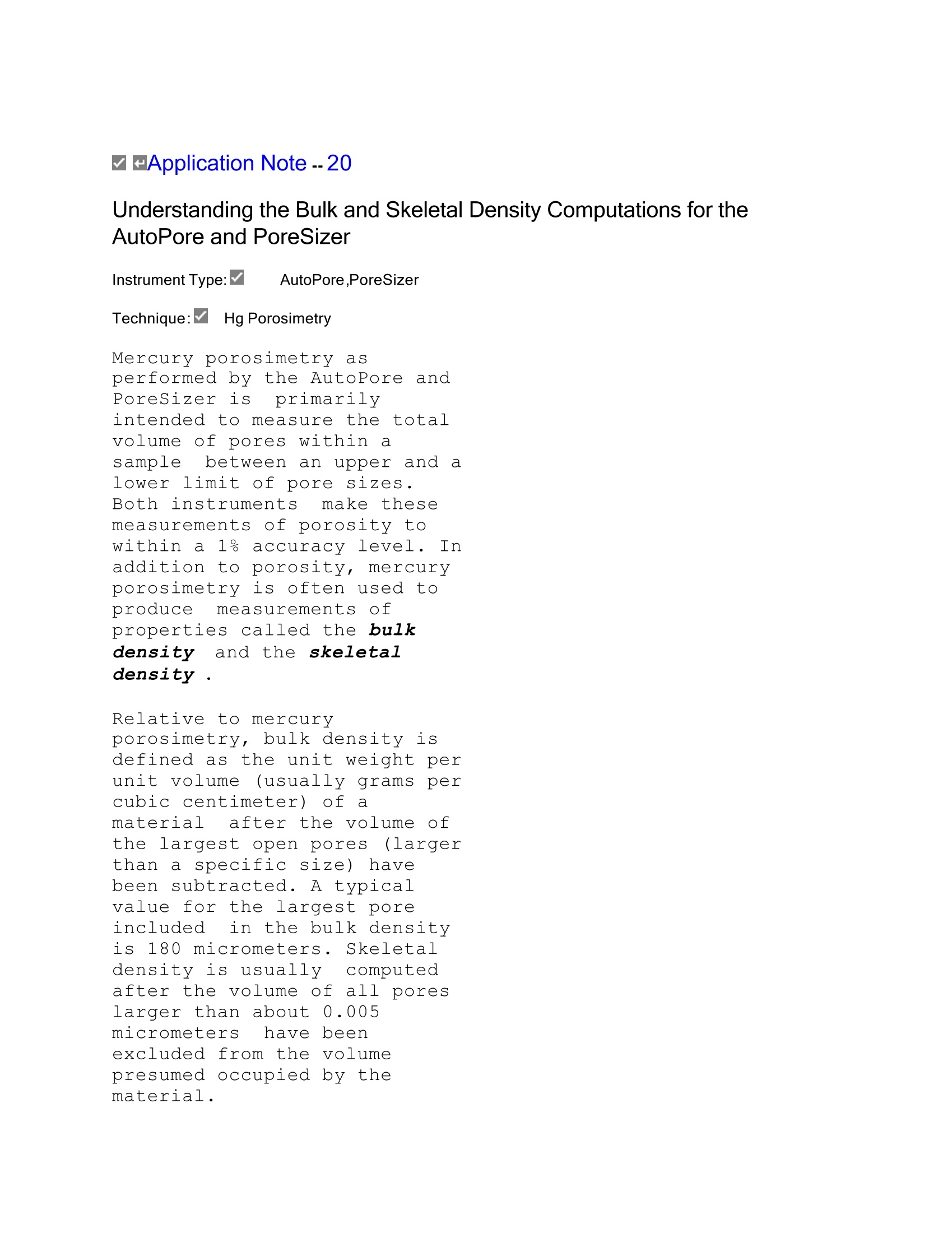

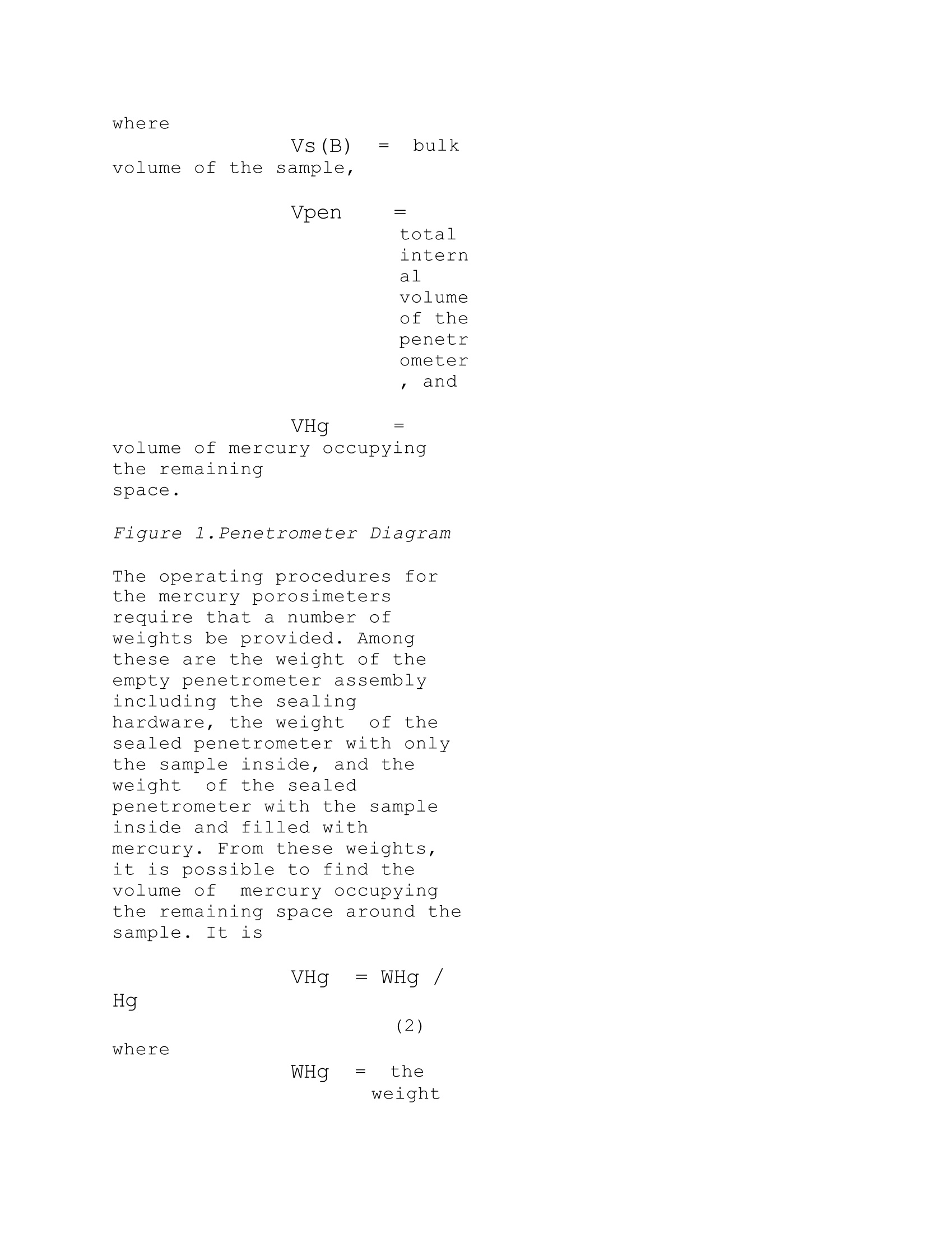
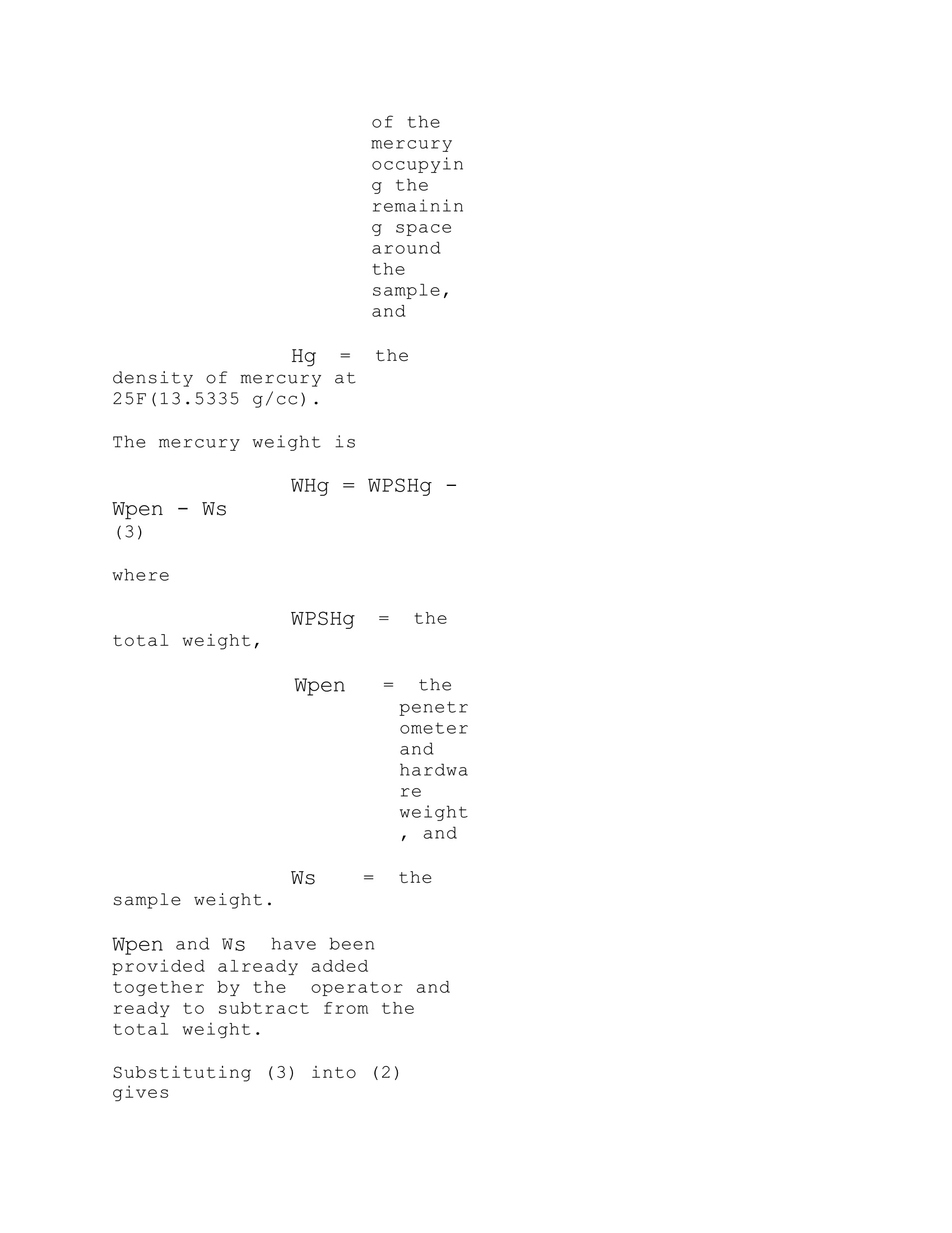
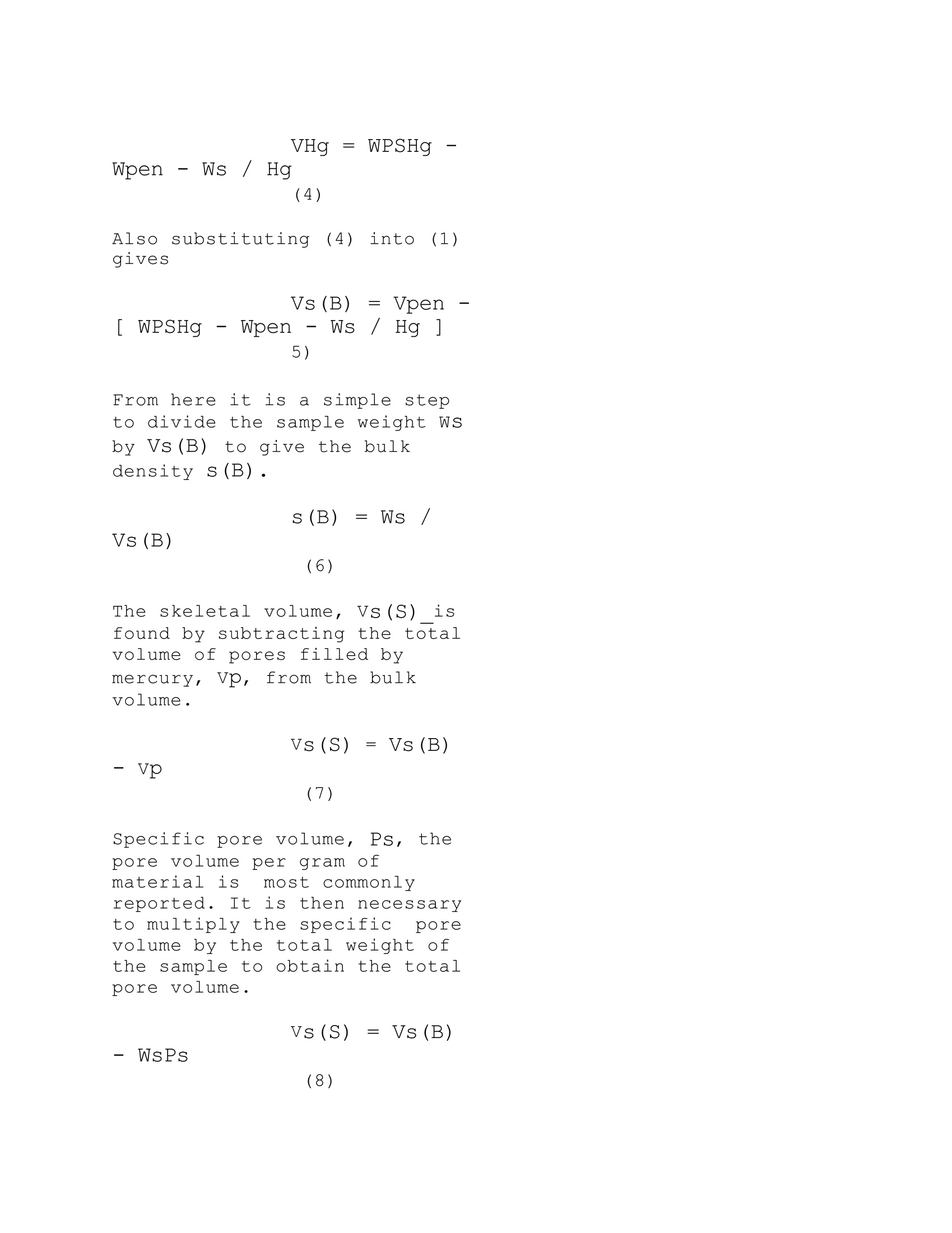
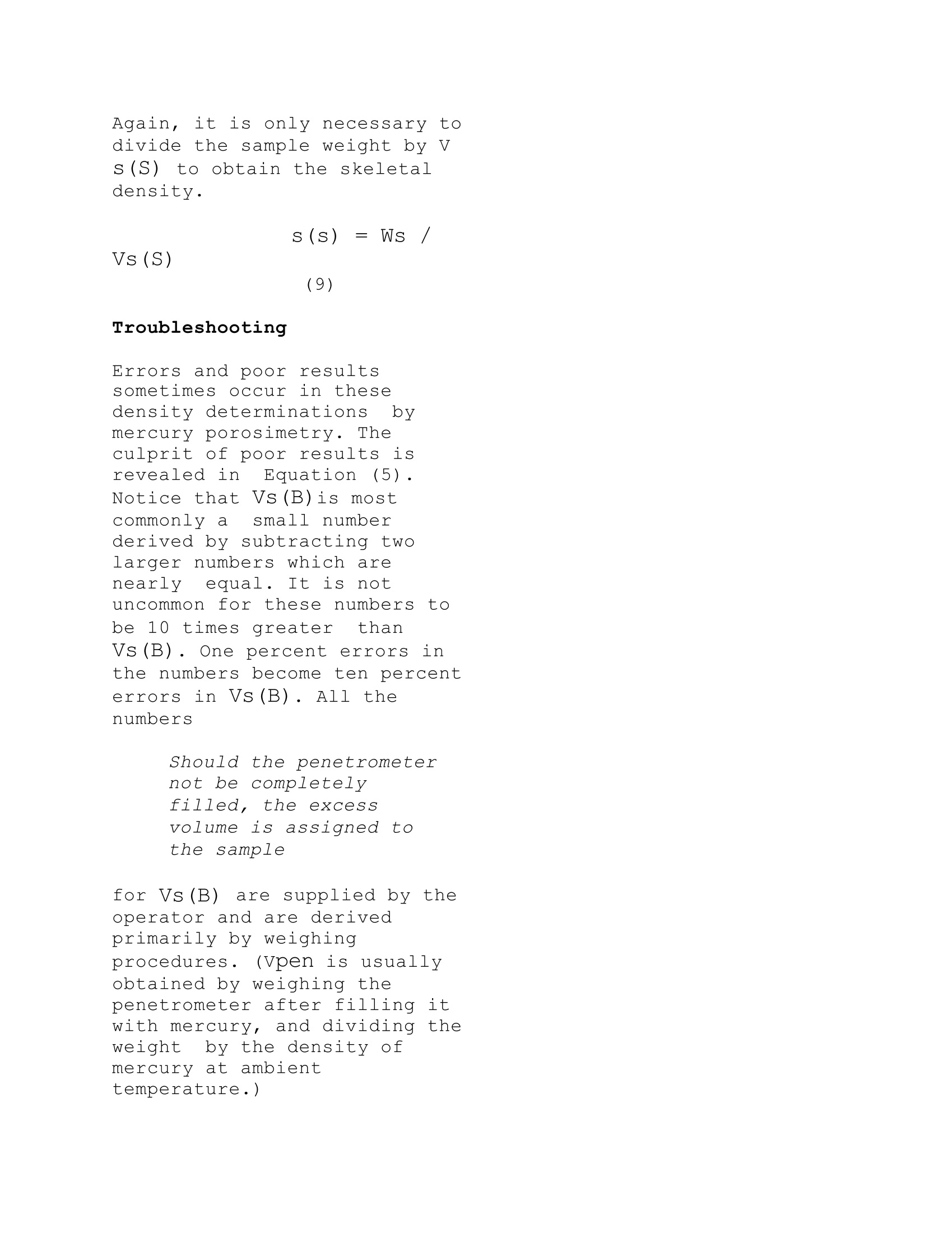

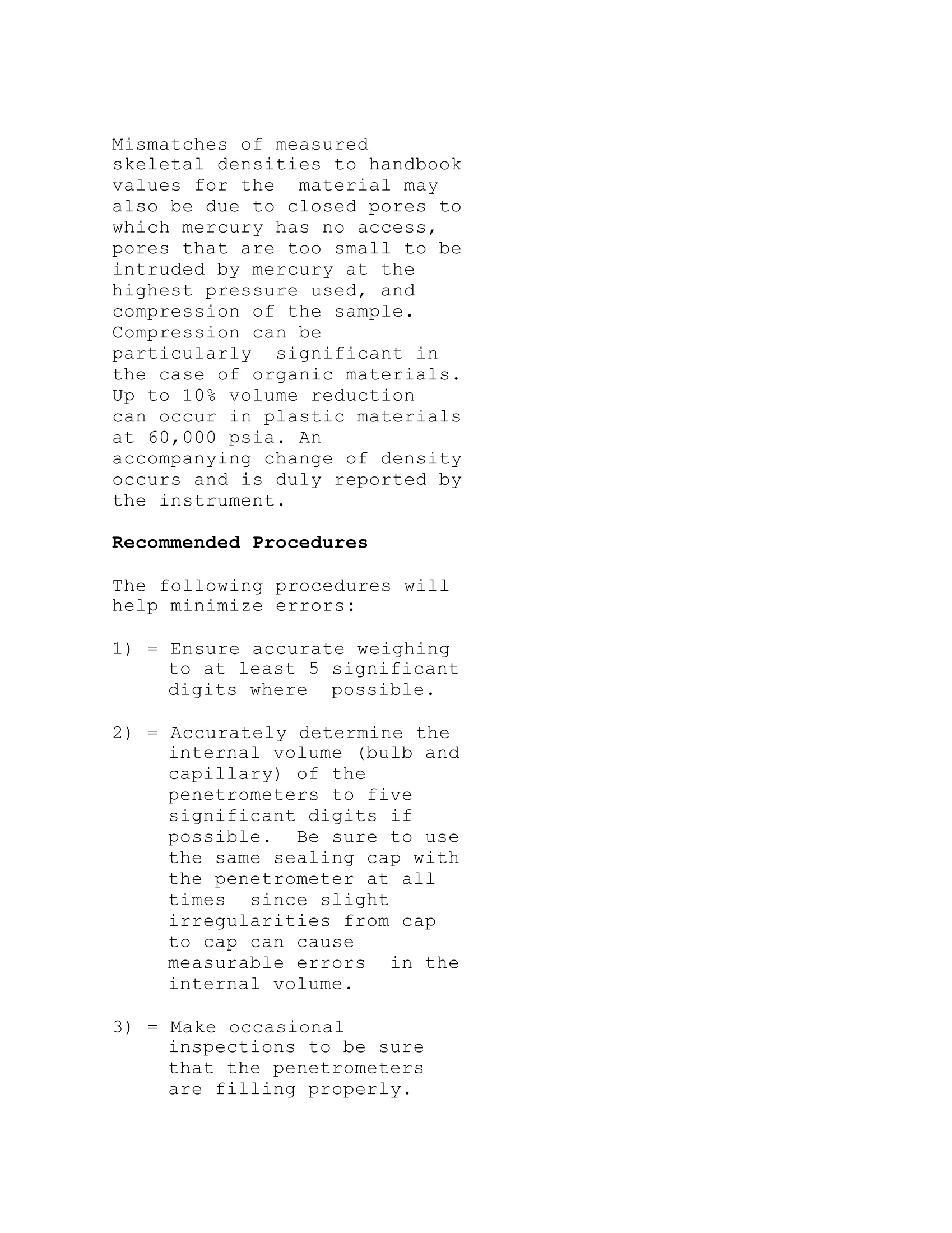
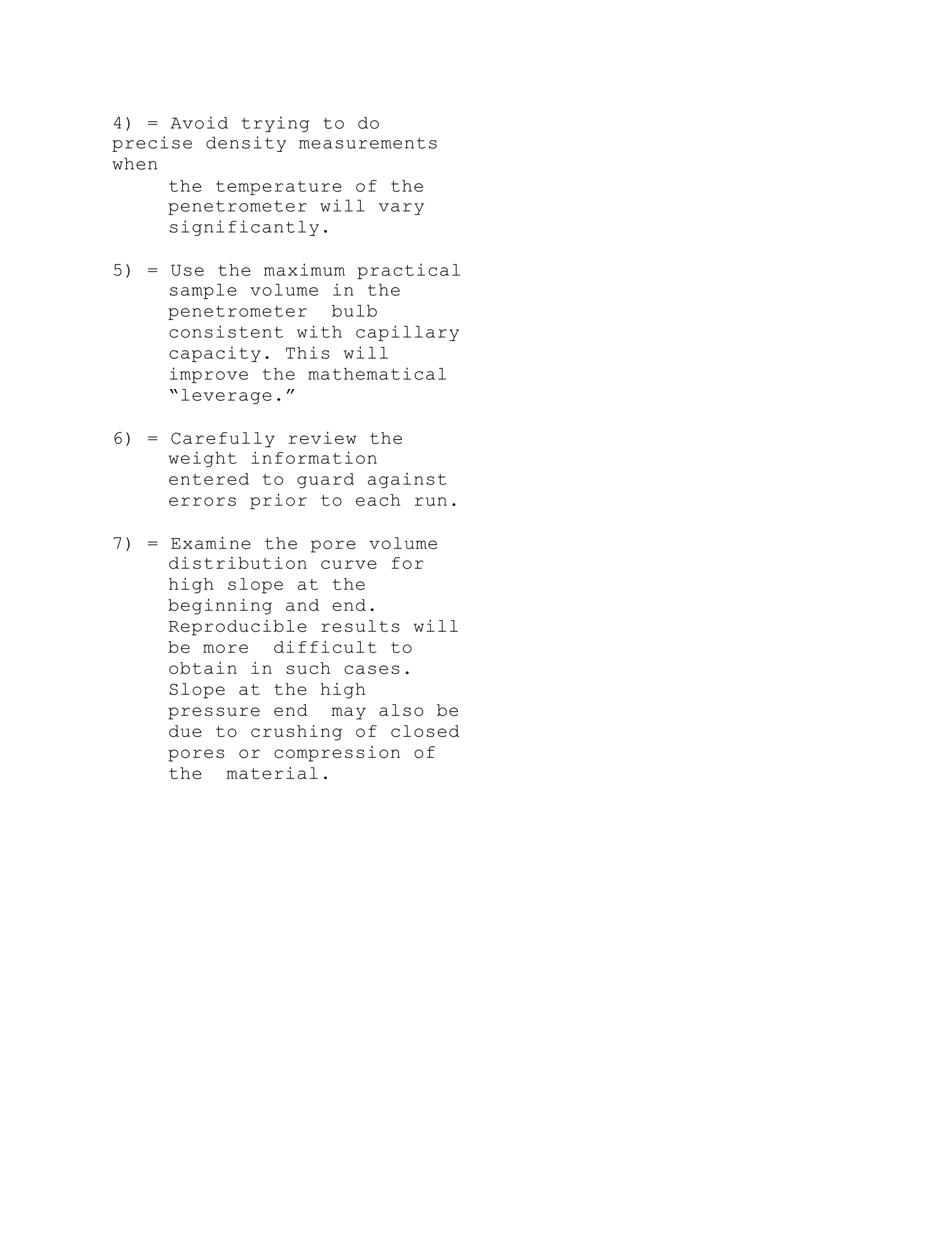
还剩7页未读,是否继续阅读?
麦克默瑞提克(上海)仪器有限公司为您提供《固体,颗粒中堆密度和骨架密度检测方案(压汞仪)》,该方案主要用于其他中堆密度和骨架密度检测,参考标准--,《固体,颗粒中堆密度和骨架密度检测方案(压汞仪)》用到的仪器有
相关方案
更多
该厂商其他方案
更多









